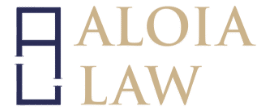While Intellectual Property (IP) assets are out of sight, they should never be out of mind. IP assets are some of the most valuable assets on the balance sheets of businesses today, with recent studies estimating that they comprise as much as 90% of the current market value of the S&P500. If you haven’t yet assessed your IP portfolio, the following questions will help you begin the process of creating a plan to identify and protect it:
What do you own?
- Identify all logos, slogans, designs, keyword advertising, and other identifiers that are used in marketing your products and services. Be comprehensive in your analysis. Even things like colors and sounds are potentially protectable.
- Immediately assign the “TM” (for trademarks) or “SM” (for service marks) symbol, as applicable, to all identifiers.
- Consider developing the distinctiveness of any identifier that is descriptive and add branding efforts where identifiers are generic or otherwise not currently able to be registered.
- Identify literary, musical and dramatic works, choreography, pictorial, graphic, sculptural, sound, computer programs, and architectural works, all of which are accorded common law copyright protection immediately upon creation and are further protectable through federal copyright registration.
- Investigate any new or useful inventions that you have created.
- Identify pricing, marketing methods, supply sources, and technical know-how, all of which may be protectable as trade secrets.
How will you protect your IP assets?
- Review current contracts and company policies to determine what confidentiality protections you have and/or need in place with employees, vendors, customers, and others that are exposed to and interact with your IP assets on a daily basis.
- Review employment agreements, independent contractor agreements, and vendor/supplier agreements to verify that they address and protect your trade secrets and include work for hire provisions where appropriate.
- Determine whether you are insured properly.
- Search the internet for infringing content and counterfeit products.
- File applications for state and/or federal protections (trademark, copyright, or patent) where feasible.
Are you infringing?
Just as important as protecting your IP portfolio is assuring that you are not infringing upon others’ rights. Take the following steps to avoid conflicts:
- Search the United States Patent and Trademark Office database and the U.S. Copyright Public Records portal for live registrations that might be confused with your identifiers.
- Jump onto your favorite search engine to look for potentially confusing unregistered uses.
- Assure that any of your uses of others’ materials are permissible under the fair use doctrine, licensure, or authorization from the owner of the material.
These are but a few of the steps you should consider in developing a plan to identify, protect and enforce your business IP assets. Maximizing and protecting these assets will keep your business healthy for years to come.
If you are interested in developing an Intellectual Property Asset Plan and have any questions, please feel free to call attorney Kathryn Spray at Aloia Law at 586.783.3300.
